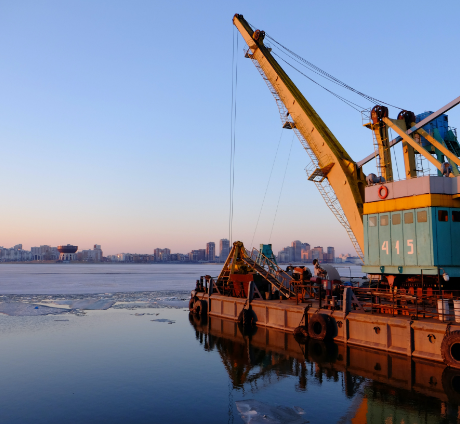PROTECTIVE MICAS
The level sight micas come from the mines, of which there are deposits in some parts of the world, including Mexico, Brazil, and India. Due to its characteristics, there are variations among the micas that can be used for level glass. The main variations are:
• Color: The micas can have a shade from green to transparent. The most commonly used in the industry is the transparent-brown shade since it offers the best price-quality ratio.
• Thickness: Depending on the thickness of the mica, the lifespan may vary. The standard thickness is 0.010 ”(0.25mm)
USES AND APPLICATIONS OF MICA IN LEVEL SIGHT GLASSES
Micas, by covering all the level glass in contact with the process, are widely used in industry, due to their excellent chemical and mechanical resistance. Among the main applications are:
• Corrosive environments that can damage the glass or its performance. Micas, due to their mechanical resistance, can withstand corrosive environments, protecting the glass and extending its useful life.
• Alkaline environments that can damage the glass or its performance. Micas, due to their chemical resistance, are not attacked by alkalis and protect the glass from chemical attack, especially at high pressures and temperatures.
• High pressures or temperatures. The micas act as a protective shield that allows the crystals to operate at higher pressure and temperature ranges, extending their useful life.
MICA FOR USE IN LEVEL CRYSTALS
Protective micas provide maximum protection for flat crystals in LG type level indicators, as they retain their basic hardness and increase the useful life of the crystals when used at high pressures and temperatures. Likewise, they offer good visibility for monitoring the variants in the combustion of furnaces and boilers.
They are considered mandatory at LG levels when the process exceeds 196 ° C and 350PSI of pressure. So these applications must necessarily have flat crystals, as shown in the image below:
TEMPERATURE / PRESSURE RATIO WITH USE OF MICA
Glasses that are used at temperatures above 280 ° C undergo temperature-induced stress and must be replaced when removed from LG equipment. Safety regulations re-quire that these glasses are not subject to thermal shock. For operations above 280 ° C, it is mandatory to use a protective mica.
According to what is already established, the glasses not subject to stress by temperature and operating under cold water pressure do not suffer accidents below 300BAR (4350 PSI) when used with mica. This standard does not require that hydrolytic pressures be carried out.


























































